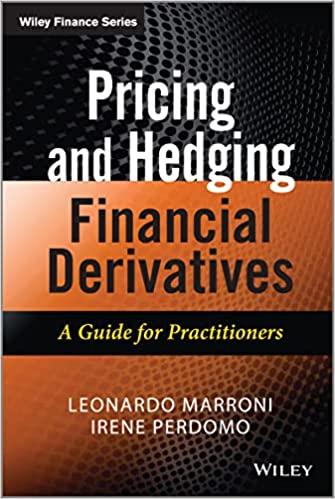Question
TABLE 1 Partial long term debt listing for TECO Energy FACE AMOUNT COUPON RATE MATURITY YEAR YEARS TO MATURITY $48,000,000 4 1/2 % 1997 5
TABLE 1
Partial long term debt listing for TECO Energy
FACE AMOUNT COUPON RATE MATURITY YEAR YEARS TO MATURITY
$48,000,000 4 1/2 % 1997 5
$32,000,000 8 1/4 % 2007 15
$100,000,000 12 5/8 % 2017 25
QUESTIONS
1. To begin, assume that it is now January 1, 1993, and that each bond in Table 1 matures on
December 31 of the year listed. Further, assume that each bond has a $1,000 par value, each
had a 30-year maturity when it was issued, and the bonds currently have a 10 percent required
nominal rate of return.
a. Why do the bonds coupon rates vary so widely?
b. What would be the value of each bond if they had annual coupon payments?
c. TECOs bonds, like virtually all bonds, actually pay interest semiannually. What is each
bonds value under these conditions? Are the bonds currently selling at a discount or at a
premium?
d. What is the effective annual rate of return implied by the values obtained in Part c?
e. Would you expect a semiannual payment bond to sell at a higher or lower price than an otherwise equivalent annual payment bond? Now look at the 5-year bond in Parts b and c. Are the prices shown consistent with your expectations? Explain.
2. Now, regardless of your answers to Question 1, assume that the 5-year bond is selling for
$800.00, the 15-year bond is selling for $865.49, and the 25-year bond is selling for $1,220.00.
(Note: Use these prices, and assume semiannual coupons, for the remainder of the questions.)
a. Explain the meaning of the term yield to maturity.
b. What is the nominal (as opposed to effective annual) yield to maturity (YTM) on each bond?
c. What is the effective annual YTM on each issue?
d. In comparing bond yields with the yields on other securities, should the nominal or effective YTM be used? Explain.
3. Suppose TECO has a second bond with twenty-five years left to maturity (in addition to the one listed in Table 1), which has a coupon rate of 7 3/8 percent and a market price of $747.48.
a. What is (1) the nominal yield and (2) the effective annual YTM on this bond?
b. What is the current yield on each of the 25-year bonds?
c. What is each bonds expected price on January 1, 1994, and its capital gains yield for 1993, assuming no change in interest rates? (Hint: Remember that the nominal required rate of return on each bond is 10.18 percent.)
d. What would happen to the prices of each bond over time? (Again, assume constant future interest rates.)
e. What is the expected total (percentage) return on each bond during 1993?
4. Consider the riskiness of the bonds.
a. Explain the difference between interest rate (price) risk and reinvestment rate risk.
b. Which of the bonds listed in Table 1 has the most interest rate risk? Why?
Step by Step Solution
There are 3 Steps involved in it
Step: 1

Get Instant Access to Expert-Tailored Solutions
See step-by-step solutions with expert insights and AI powered tools for academic success
Step: 2

Step: 3

Ace Your Homework with AI
Get the answers you need in no time with our AI-driven, step-by-step assistance
Get Started


